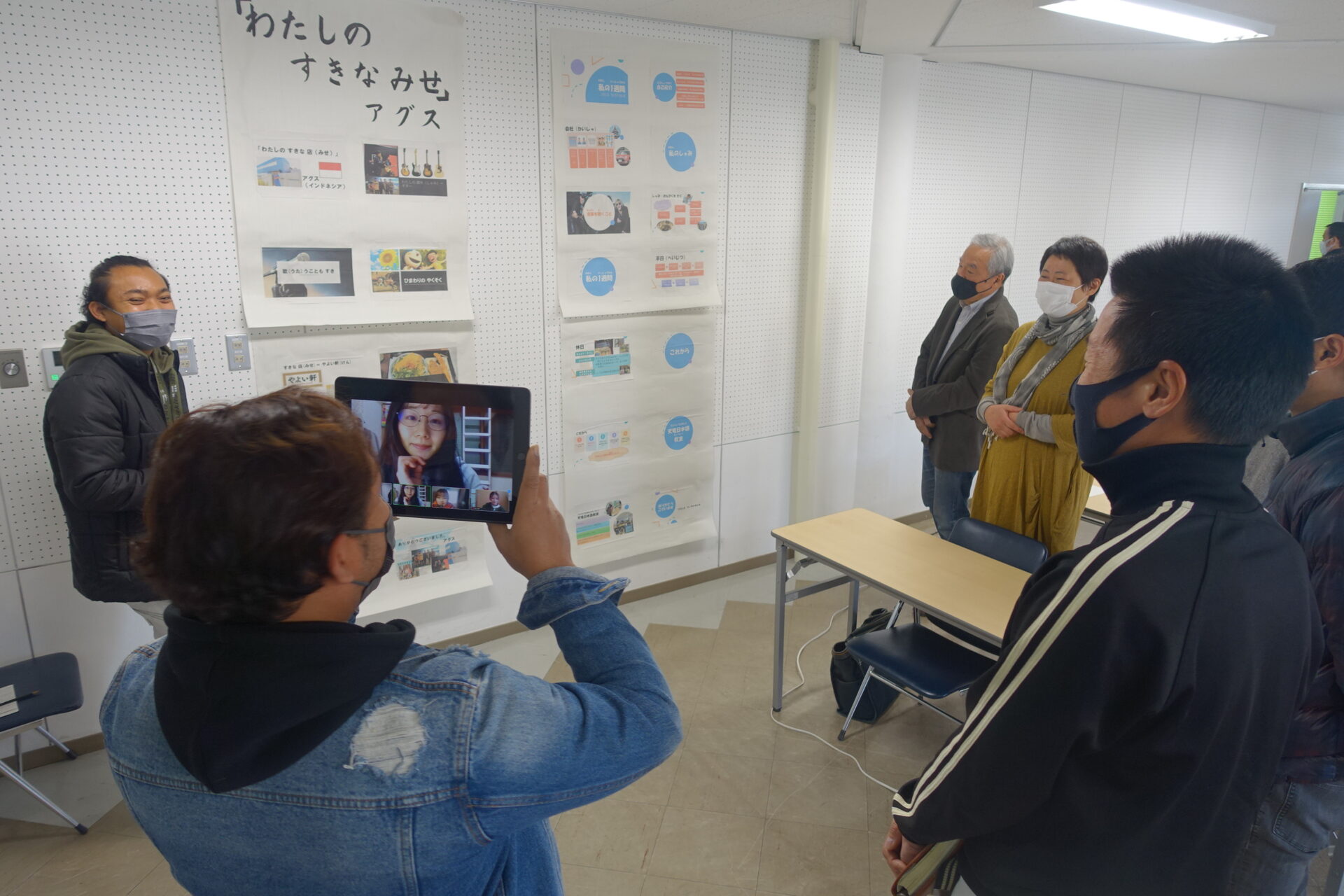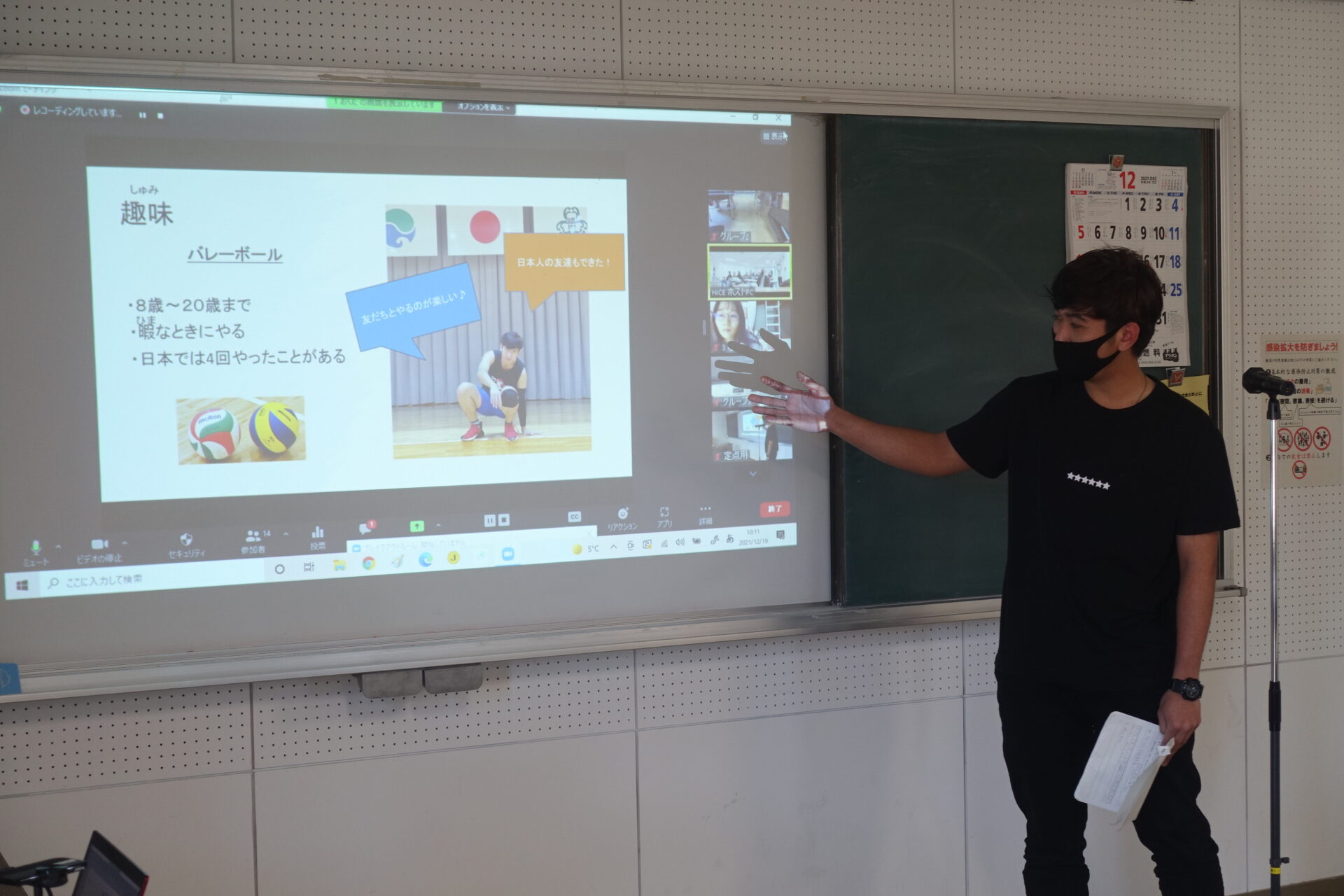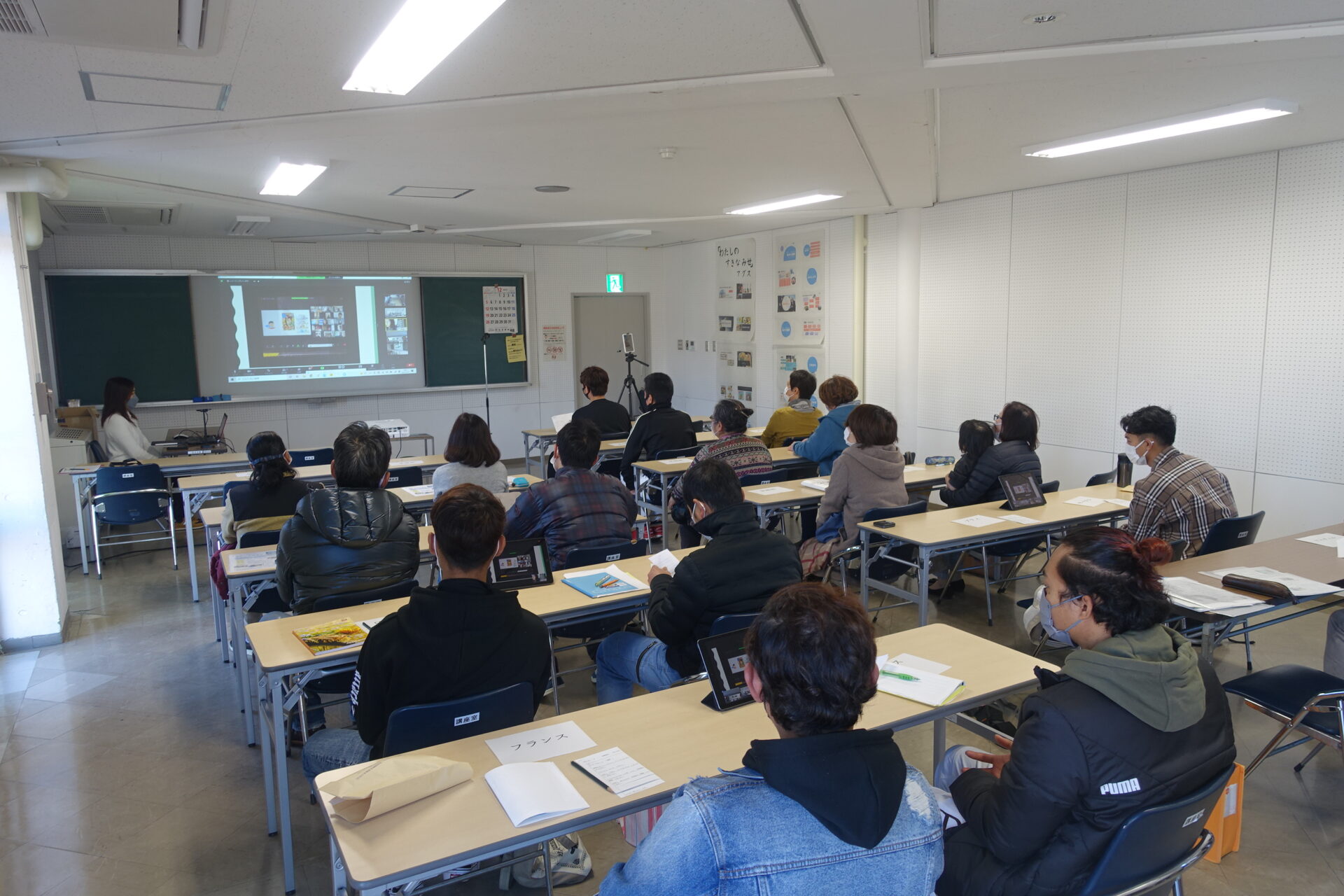FY2021 has been the second year in a row that we have been dealing with the Corona Virus situation while also trying to run classes. As this is our second year, we have gradually gotten used to the situation, and become more flexible in organising Japanese language classes. Now we provide the option of choosing between face-to-face classes, online classes, or a combination of the two. Under these new circumstances, we would like to report on some of the new initiatives that we have started.
Implementation of an Intermediate Level Class (U-ToC Plan)
On October 12th 2021, the Japanese Language Subcommittee of the Council for Cultural Affairs of the Agency for Cultural Affairs compiled a Report on the Reference Framework for Japanese Language Education. The Framework of Reference for Japanese Language Education is a reference framework for the study and teaching of the Japanese language, which (1) considers learners of Japanese as social beings, (2) focuses on what they can do with the language, and (3) promotes the diversity of the Japanese language. The framework created uses CEFR (the Common European Framework of Reference for Languages), as a basis for establishing class levels. There are three levels within the CEFR framework. A, denoting basic language users, B for independent language users and C for those considered proficient language users, each of which is divided into two parts (1 and 2), making a total of six levels.
The following is a summary of the information on the class itself. In addition, the Agency for Cultural Affairs is preparing a “Daily life Skills Class” for levels A1 to B1 (including some B2) to be introduced by the end of FY2021. As a result of these developments, U-ToC also conducted a trial intermediate class (equivalent to CEFR B1 level).
The intermediate class was held online from October 1st to March 25th, twice a week, from 1.30pm to 3.30pm. Originally, we expected to receive applications from students who had completed the beginner’s class, as we had heard from students of the first beginner’s class that they wanted to study more Japanese, however we also received applications from students we didn’t expect, but who had previously studied at the U-ToC and obtained JLPT N4. Similarly, there were also foreign workers who settled in Japan. There were a total of eight learners (from various countries such as Brazil, the Philippines, Mexico, etc.). Some students had returned to their home countries temporarily at the end of the year, but still joined the online classroom. One of the Brazilian students who attended the class told us “I have lived in Japan for more than 10 years, but I have not used Japanese. I used to use an interpreter to go to the hospital, but now I can go alone. My mind feels stronger and I feel more confident overall in doing things by myself since taking the intermediate class.” She told us. We will continue to support the learners in supporting their Japanese language studies so that they can finally live independently.
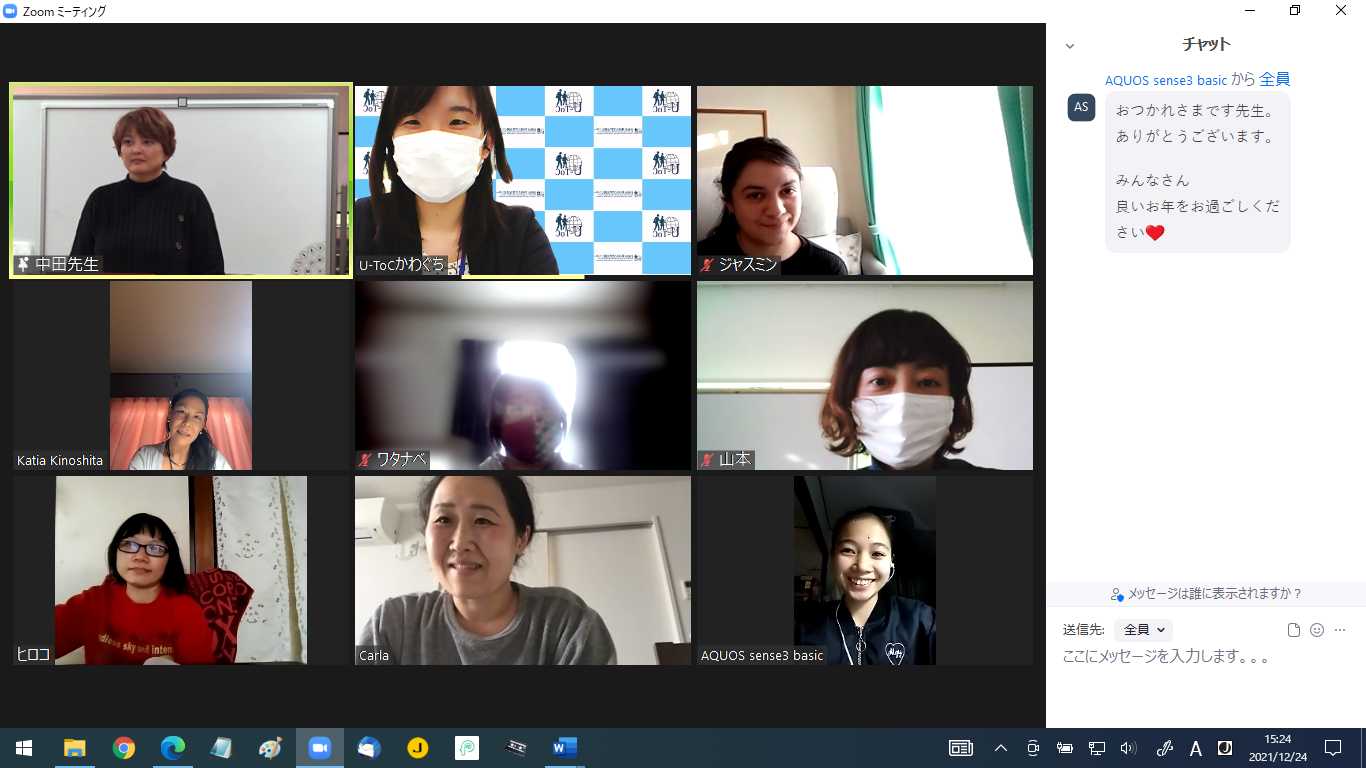
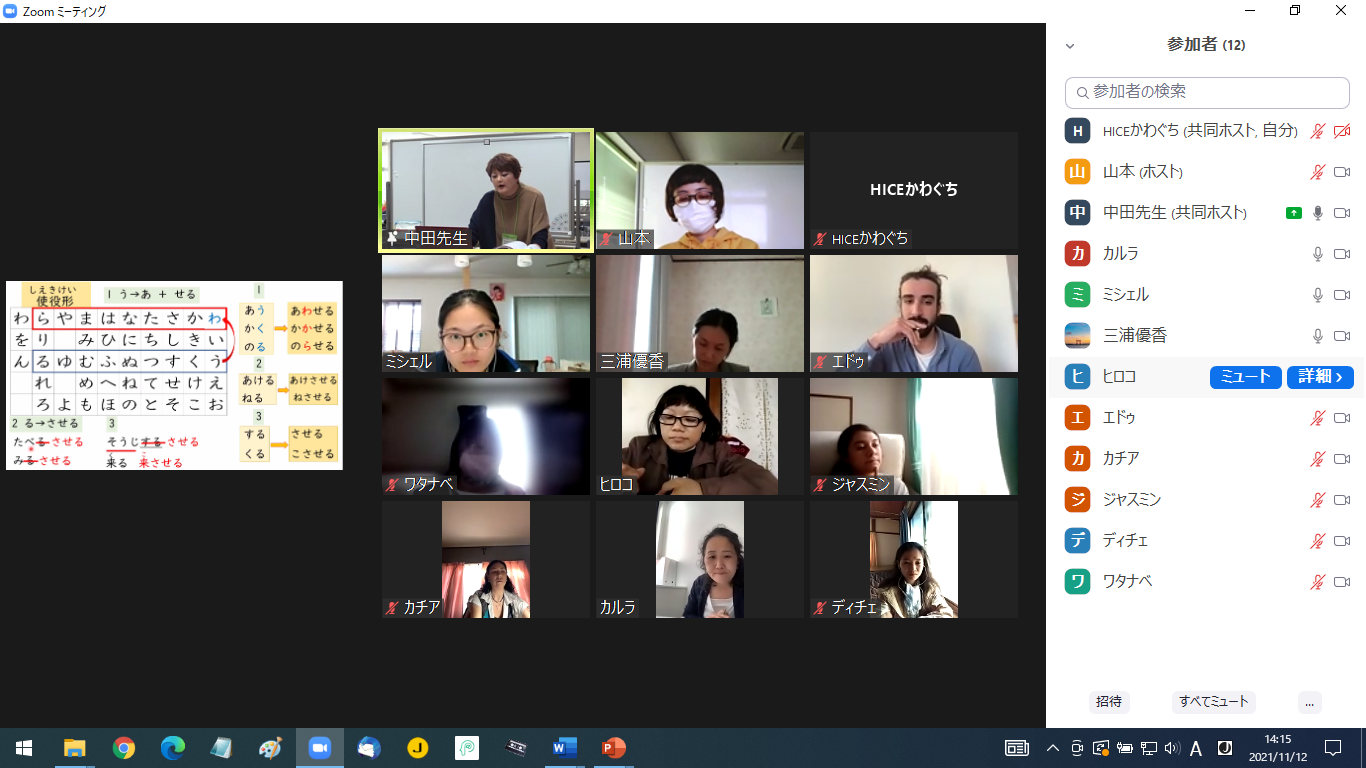
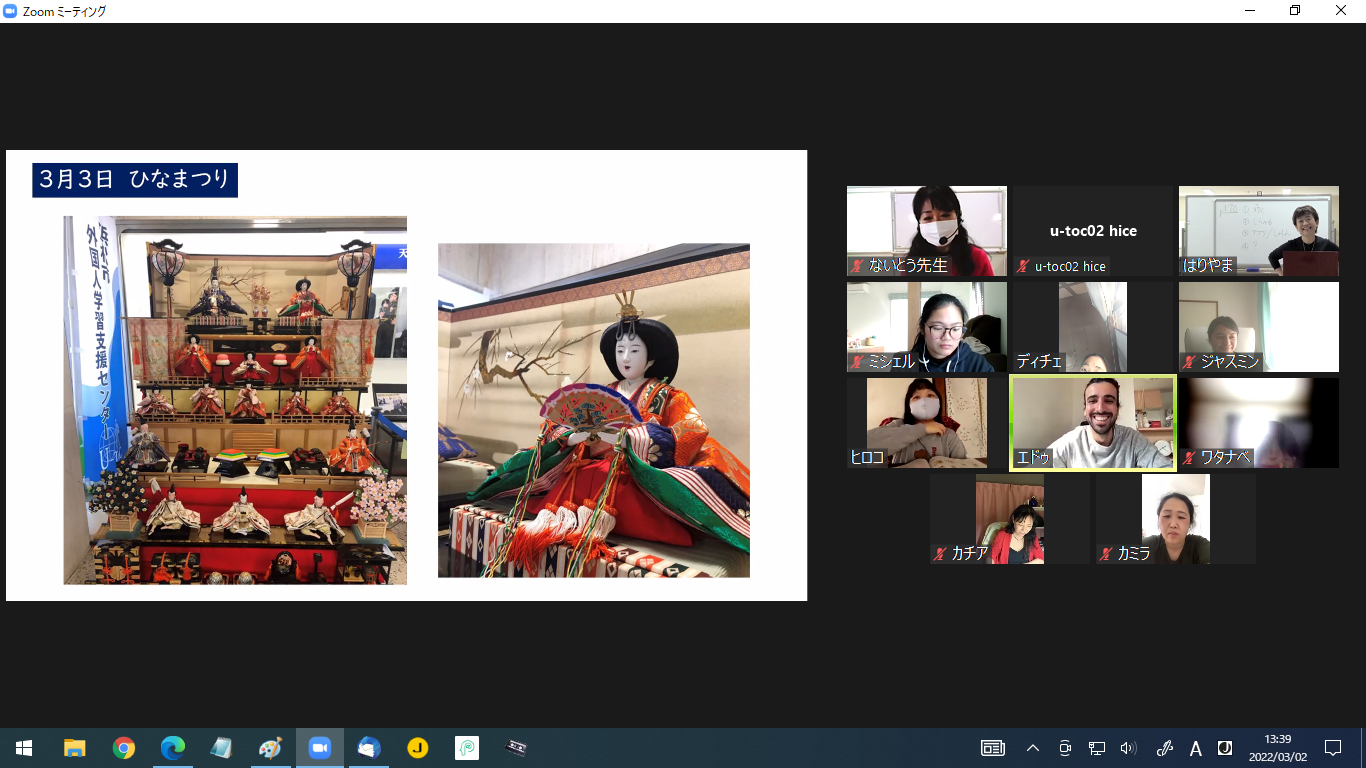
Collaborating with universities to train Japanese Language teaching personnel in ‘Using ICT – Tenryu Japanese Language Classes’ (Commissioned by Hamamatsu City, Assistance from the Agency for Cultural Affairs)
Based on the comprehensive collaboration agreement between Hamamatsu City and Tokoha University, a series of classes has been established. The collaborative classes, which were implemented on a trial basis in 2020, have this year started to be held online. They utilised ICT and were held once a month at the Tenryu Japanese Class. Nine students took part in the Japanese Language Teacher Training Course at Tokoha University. In the class, they did many activities such as preparing lesson plans and teaching materials. Additionally, they conducted classes as potential Japanese language teachers. The course was conducted by Tohoka University Professors Sakamoto and Tani, so there was a great sense of confidence in the quality of the class. The students also seemed to enjoy the opportunity to interact online with other students interested in the same things.
We also held a face-to-face and online, hy-flex (blended learning), presentation in the Tenryu class in December. The students who attended the class made presentations about themselves, where they made self-introductions, and talked about their jobs, hobbies, country and town. Students created the speeches and slides for the presentations remotely. On the day of the event, some 16 guests came to the venue to listen to the presentations given by the students. They also chatted with the students online, thus leading to a warm cordial atmosphere. Some of the employers of the Tenryu classes student’s also came to the event and were impressed by their speeches in Japanese .
Although we have encountered some difficulties in the organisation of the blended online and in-person presentations, we would like to continue to run these events in the future using the hy-flex method. We think it could benefit university students who live far and wide across the prefecture, and even in other prefectures. Participants can take part online without fear of transportation costs or time, etc. Having both methods also allows in person learners to interact directly with local instructors or visiting lecturers at the venue.
